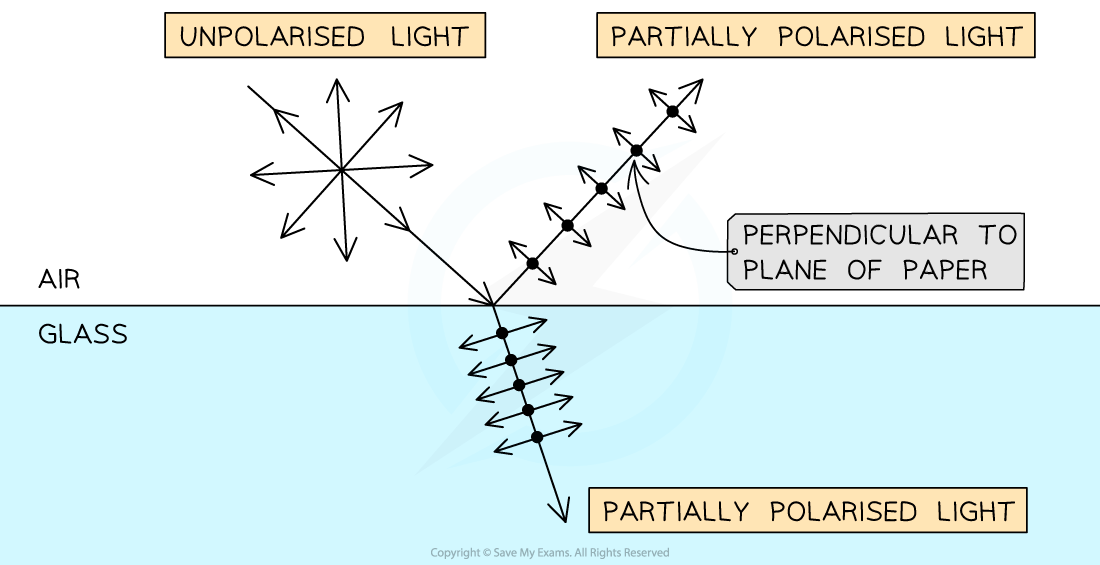Polarisation
- Transverse waves can oscillate in any plane perpendicular to the direction of motion (and energy transfer) of the wave
- Such waves are said to be unpolarised
- When a transverse wave is polarised, its electric field is only allowed to oscillate in one fixed plane perpendicular to the direction of motion of the wave
- A transverse wave can be vertically polarised, horizontally polarised, or polarised in any direction in between
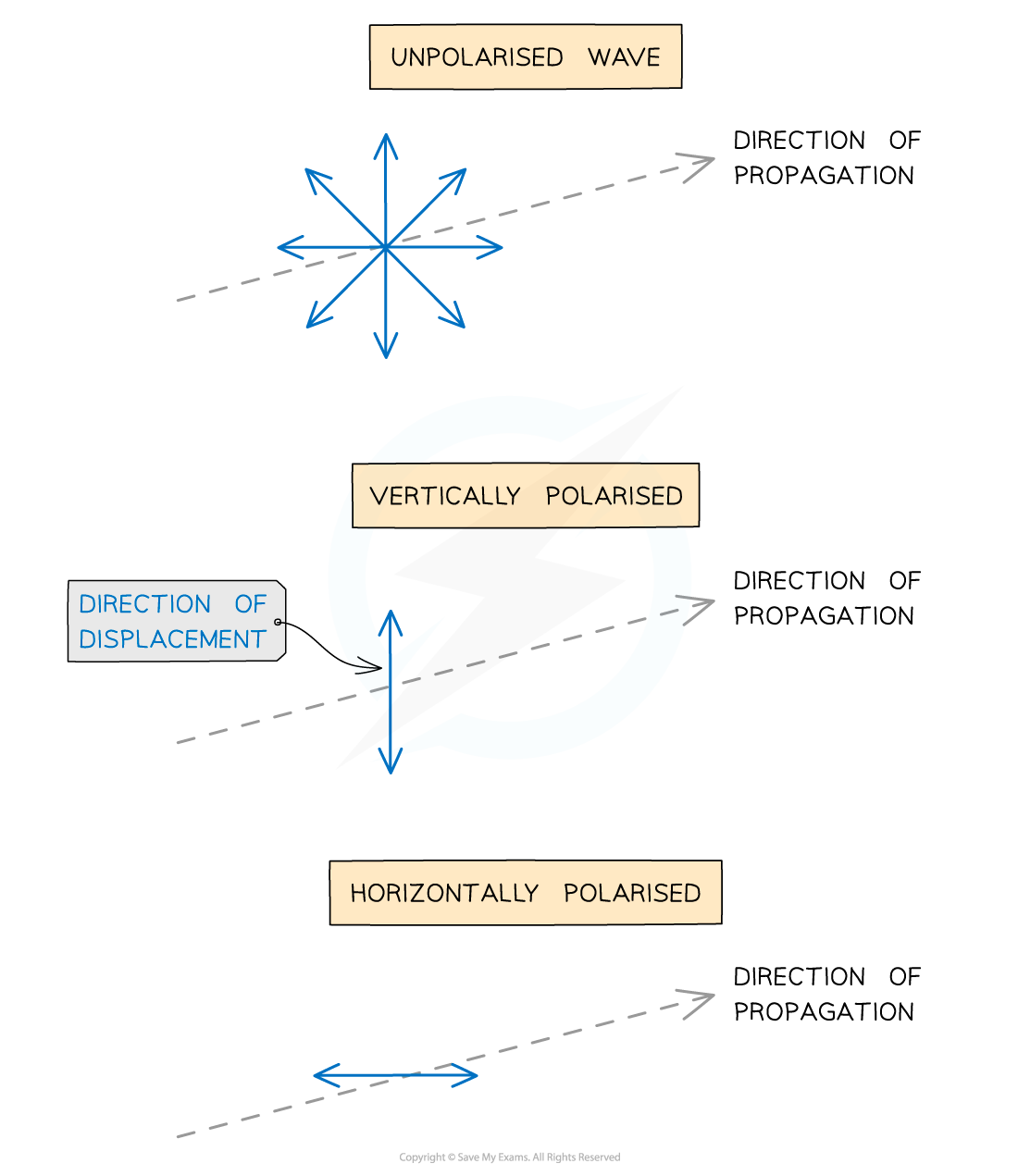
Diagram showing the displacement of unpolarised and polarised transverse waves
- Since longitudinal waves oscillate in the same direction as the direction of motion of the wave, polarisation of longitudinal waves cannot occur
- Methods of polarisation include polarising filters and reflection from a non-metallic plane surface
Polarising Filters
- Light waves can be polarised by making them pass through a polarising filter called a polariser
- The filter imposes its plane of polarisation on the incident light wave
- A polariser with a vertical transmission axis only allows vertical oscillations to be transmitted through the filter (A)
- If vertically polarised light is incident on a filter with a horizontal transmission axis, no transmission occurs (B), and the wave is blocked completely
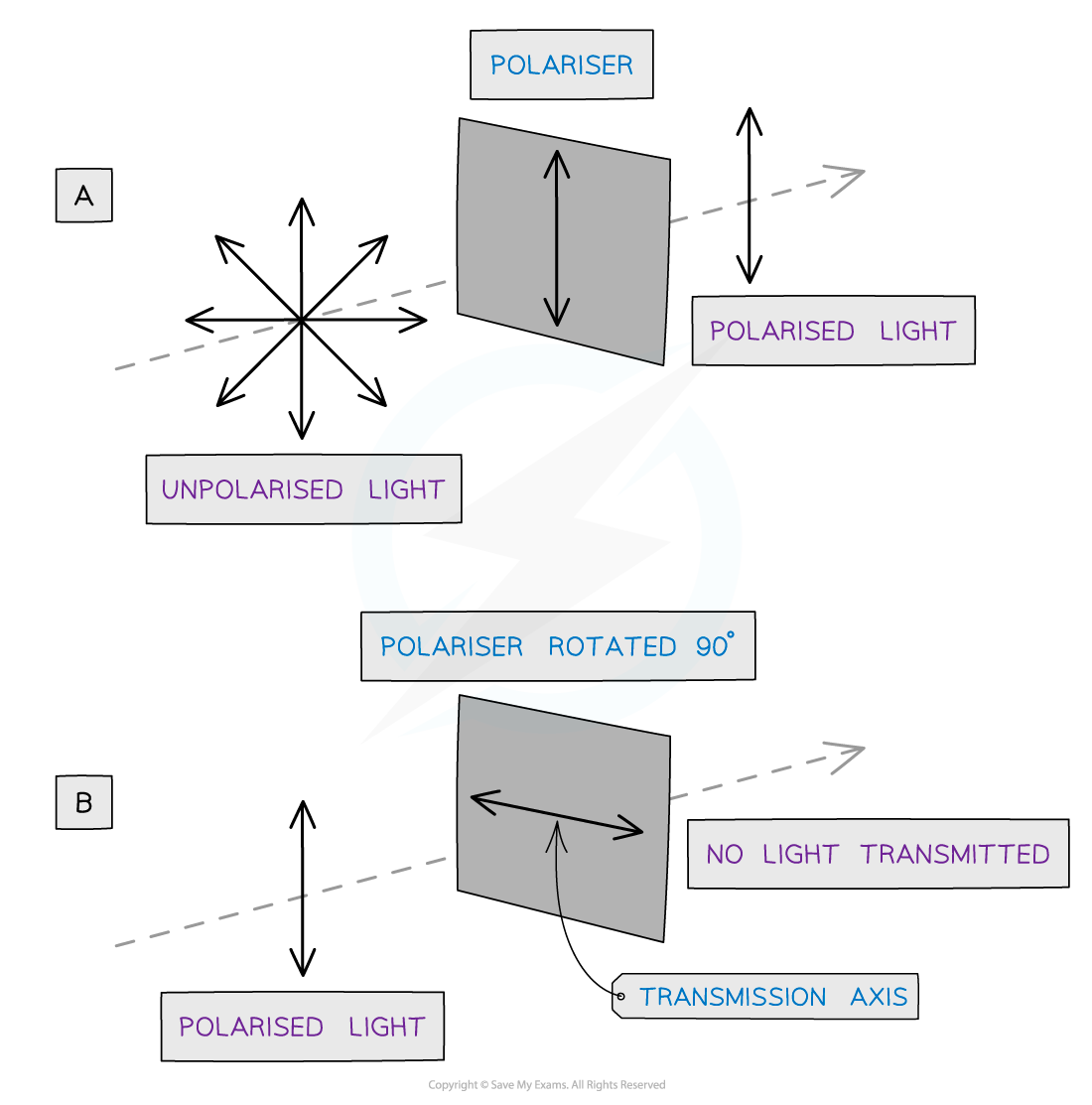
Diagram showing an unpolarised and polarised wave travelling through polarisers
Polarisation via Reflection
- When unpolarised light reflects from a smooth non-metallic surface, partial plane polarisation always occurs
- Reflected light is polarised in a plane parallel to the reflecting surface
- This means if the surface is horizontal, a proportion of the reflected light will oscillate more in the horizontal plane than the vertical plane
- Polarising sunglasses use this property of reflection in order to reduce the glare coming from a reflective surface (e.g. water)
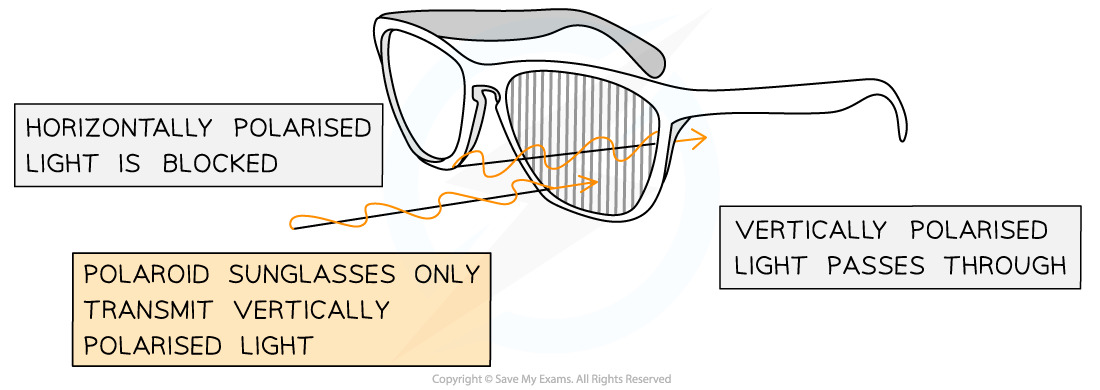
Polaroid sunglasses contain vertically oriented polarising filters which block out any horizontally polarised light
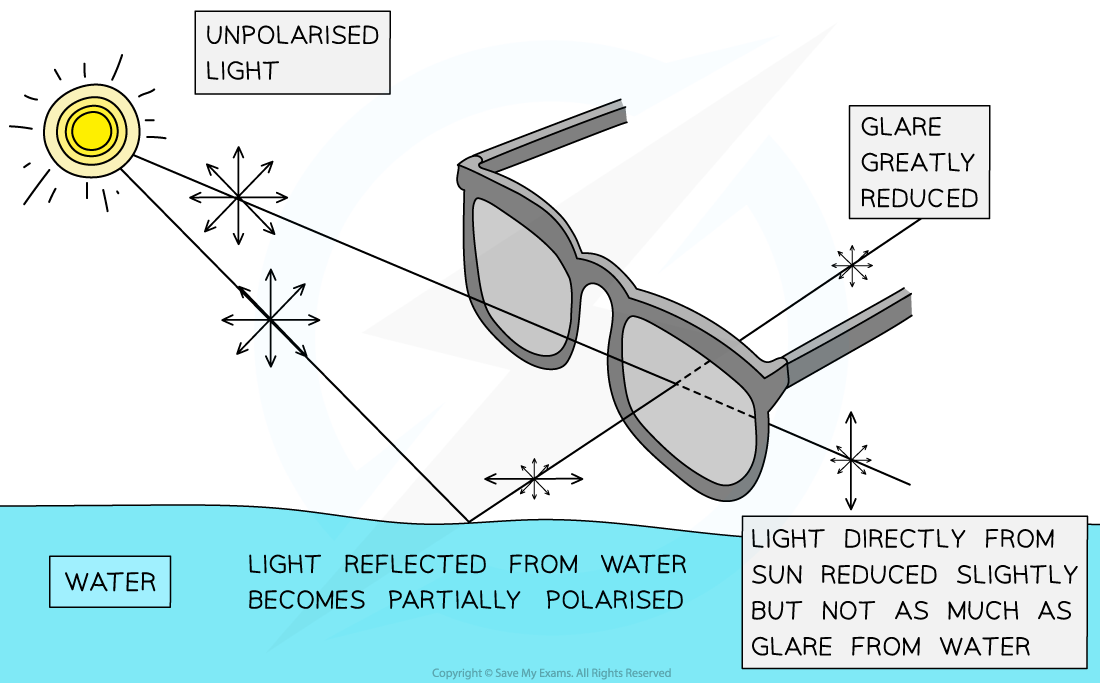
When sunlight reflects off a horizontal reflective surface (e.g. water) the light becomes horizontally polarised. This is where polaroid sunglasses come in useful with their vertically aligned filter
- As a result, objects under the surface of the water can be viewed more clearly
Polarised, Reflected & Transmitted Beams
- Beams can be polarised, reflected or transmitted
- When beams are polarised, the oscillations of the waves are made to oscillate only in one plane
- This affects the intensity of the waves
- Diagrams demonstrating polarisation will include a double-headed arrow showing the plane of polarisation of the wave
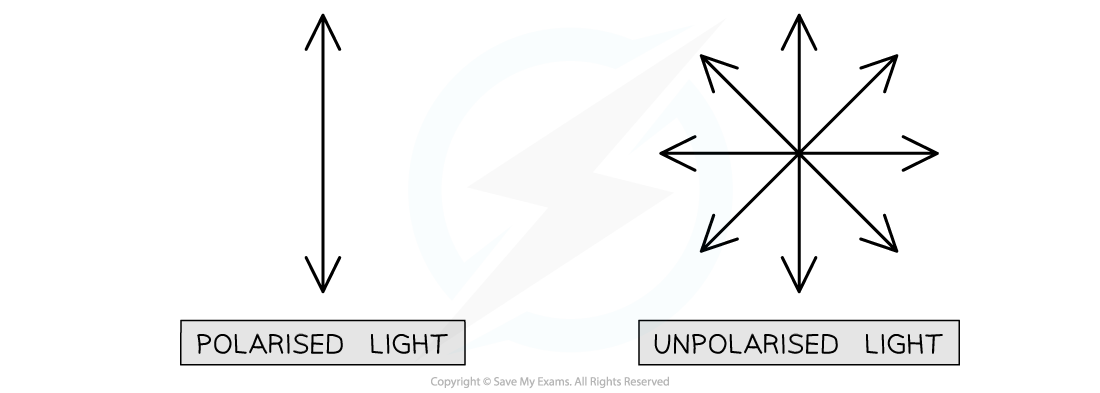
- When beams are reflected, they bounce back in the direction that they have come in by the same angle
- When beams are transmitted, they travel straight through the medium
- In both these cases, the light can still be polarised
- Plane polarisation is when the direction of the vibrations stays constant over time, and the vibrations are 100 % restricted in that direction
- Partial polarisation is when there is some restriction to the direction of the vibrations but not 100 %
- This can be seen when an unpolarised light beam travels from air to glass
- The light is initially unpolarised when incident on the glass
- Some of the beam is reflected, partially polarising it
- Some of the beam is transmitted and refracted, also partially polarising it
